Panch Kailash
Panch Kailash is a series of five mountain peaks in the upper Himalayan region. Panch is a Hindi word that means five which makes the meaning of five Kailash.
We all know the mighty Himalayan range is full of nature’s most jaw-dropping creations and never fails to surprise us in every way possible. Here, I will tell you about nature’s wonder, “THE PANCH KAILASH,” which is the true abode of Lord Shiva and has been the beacon of spirituality in our country and everywhere for millennials, not only for humans but also for the Gods, Lords, and even for the Rakshasa and Demons.
What is Panch Kailash name
The Panch Kailash names are Mount Kailash in Tibet(China), Adi Kailash in Uttarakhand, Shrikhand Mahadev, Kinner Kailash, and Manimahesh Kailash in Himachal Pradesh. Panch is a Hindi word that means five. Here are some must-know details of every Kailash.
- Mount Kailash or Kailash Mansarovar – Kailash Mansarovar or Mount Kailash is a Mountain peak in the upper Himalayan region in Tibet(China) most important in Panch Kailash.
Mount Kailash is believed to be the home of the mighty Hindu lord Shiva and it is believed that lord Shiva lives here with his wife Goddess Parvati Devi, his sons lord Ganesha, lord Kartikeya, his beloved Nandi, and all the Ganas( mystical beings who are devotees of lord Shiva).
The mountain is shaped like a Shiva linga at an elevation of 6638 meters. Kailash Mansarovar is the only Kailash outside of India.
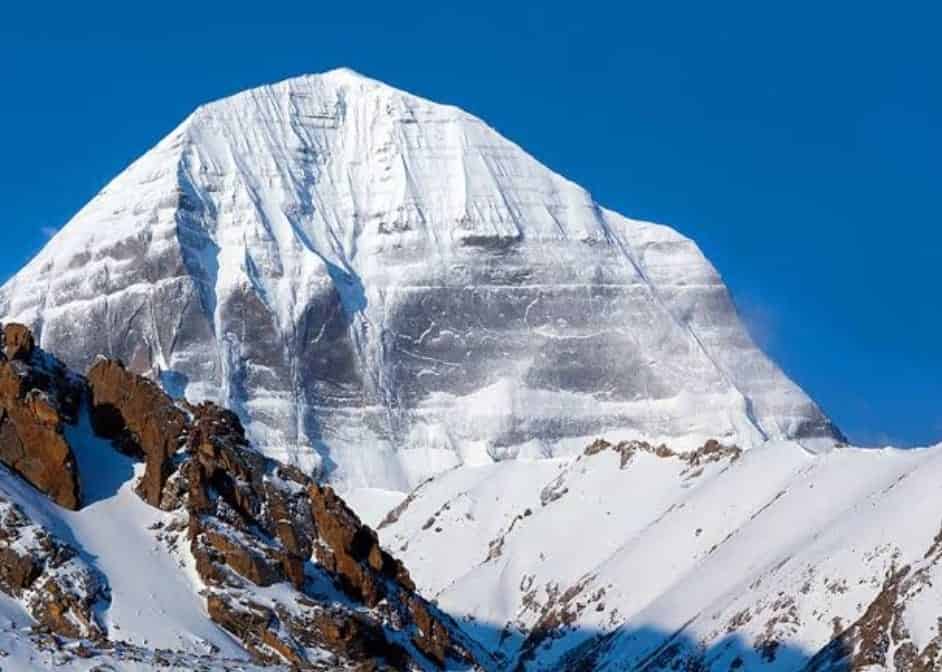
2. Adi Kailash – Adi means “First” Adi Kailash is a mountain peak located in Vyas Valley in the northern state of Uttarakhand India.
Adi Kailash and Kailash Mansarovar are diffent, people often get confused between them read our article differnce between Adi Kailash and Kailash Mansarovar.
In Hindu Dharma, it is believed that Goddess Parvati who is called “NANDA” in Uttarakhand, was born in a mountain village of Uttarakhand named “Kurur”.
The Goddess was married to lord Shiva then all her family members and villagers went with them on their way to Mount Kailash or Kailash Mansarovar until they reached Homkund the foothills of the Kailash range.
From Homkund lord Shiva and Mata Parvati continued their journey alone. After Homkund Adi Kailash was their first stop on the way to Mount Kailash, and this is the reason why this peak is called Adi Kailash.
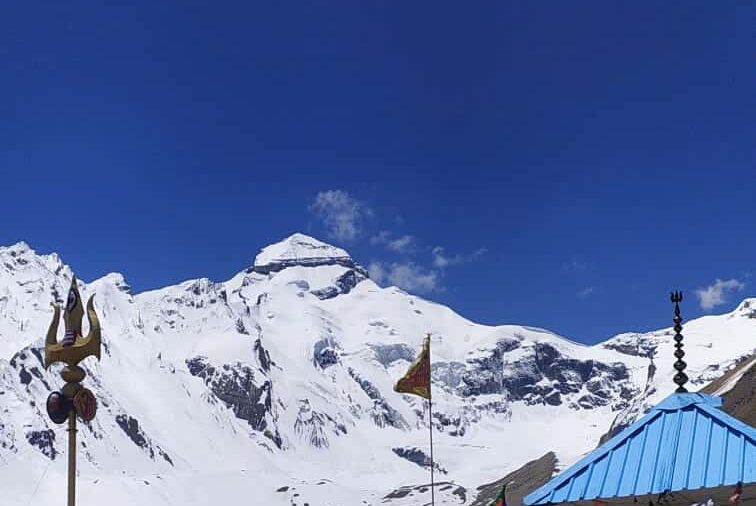
3. Shrikhand Kailash – Shrikhand Kailash is also the hardest trek among the Panch Kailash. In the Vaidik times (Satyug) there was a rakshas named “BHASMASUR” who did very hard penance and got a boon from lord Shiva that if he places his hand on anyone’s head he/she would burn immediately.
After getting the boon he went on trying it on lord Shiva to test the boon. Lord Vishnu came in the form of a “MOHINI” and hypnotized Bhasmasur with his tremendous singing and dancing that Bhasmasur started dancing with her forgot about the boon put his hand on his own head while dancing and died right there.
But Lord Shiva got disturbed by the feeling of giving the boon to the wrong person and then he disappeared from there and hid in the area for a long time to meditate.
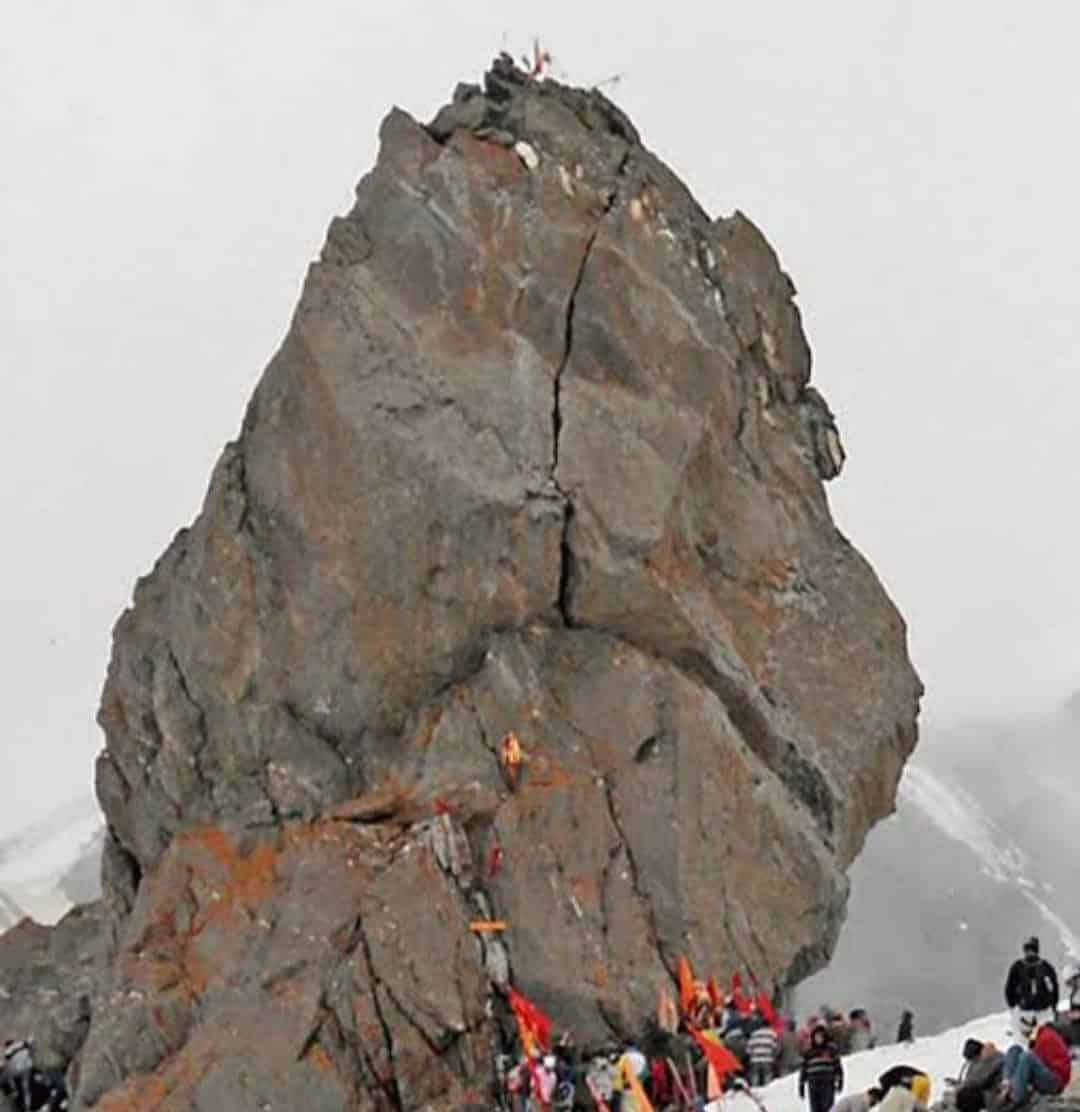
4. Kinner Kailash – There are many legends and stories about the Kinner Kailash going from generation, and some have their presence in old scripture and literature.
First – The Kinner Kailash peak or area is believed to be the resting abode of Lord Shiva and Mata Parvati. The Kinner tribe, who reside in Kinnaur, were honoured by having the mountain named after them “Kinner Kailash”.
The term “Kinner” has various mythical meanings associated with it and has been mentioned in various pieces of literature, including the Shiv Purana, Vishnu Purana, Matsya Purana, Ramayan, and Rajtaringini. This collection of epics honours the Kinners as a distinctive clan of demi-gods who stand halfway between mortals and gods.
Second – This one is a bit confusing and matches the story of Shrikhand Mahadev. In the Vaidik times (Satyug) there was a rakshas named “BHASMASUR” who did very hard penance and get the boon from lord Shiva that if he place his hand on anyone’s head he/she will burn immediately.
After getting the boon he went on trying it on lord Shiva to test the boon. Lord Vishnu came in the form of a “MOHINI” and hypnotised Bhasmasur with his tremendous singing and dancing that Bhasmasur started dancing with her forgot about the boon put his hand on his own head while dancing and died right there.
But Lord Shiva got disturbed by the feeling of giving the boon to the wrong person and then he disappeared from there and hid in the area for a long time to meditate, thus the area got its name Kinner for the Lord Vishnu’s MOHINI form and Kailash because of Lord Shiva thus the name Kinner Kailash.
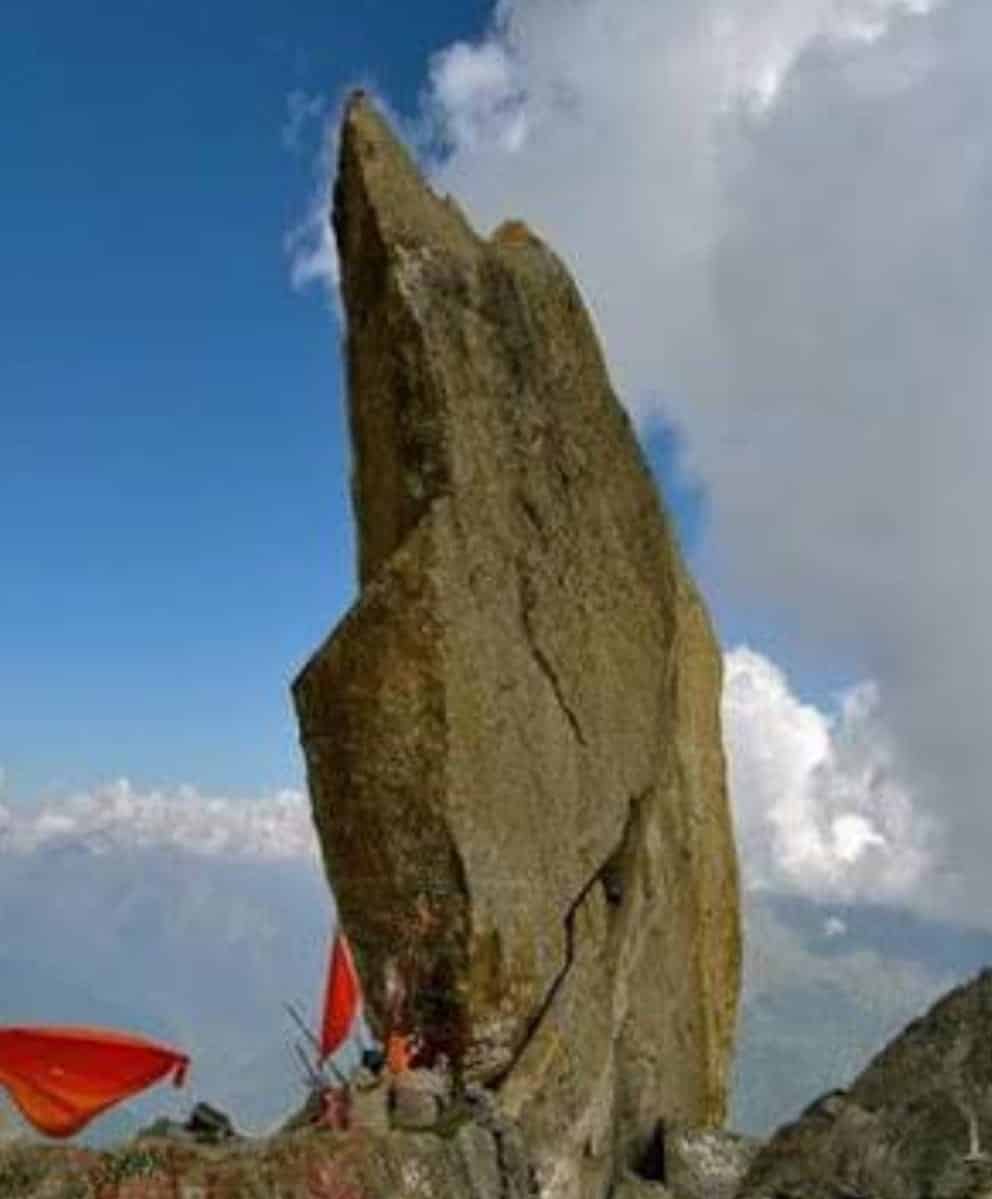
5. Mani Mahesh Kailash – There are many legends and beliefs behind the Manimahesh Kailash and Manimahesh Lake. Mani Mahesh Kailash is the Fifth and last in Panch Kailash the Chamba District of Himachal Pradesh India.
Local gaddi people(nomadic tribal people) of Chamba district believe that lord Shiva himself created this lake after lord Shiva and Goddess Parvati got married. Some people say that Lord Shiva did penance here and then made Gaddi tribe his devotee.
Some people say that one day lord Shiva went out and got late coming back so Mata Parvati got angry and hid in a cave behind the Dhanchoo waterfall, so lord Shiva decided to stay at Manimahesh Lake for penance that’s why this place is so sacred for pilgrims to attain moksha.
Mani is a Hindi word that means jewel, in the morning time when the sun rises behind the Manimahesh Kailash peak the reflection in the Lake seems like the jewel on Shivalinga’s head this phenomenon attracts so many pilgrims, devotees, tourists, and adventure seekers as well. Mani Mahesh Kailash is also the easiest to reach among the Panch Kailash.

Panch Kailash name and location
Here is the table of Panch Kailash name and location with their coordinates.
S.N. | Name | Local Area | Country | Location |
| 1 | Mount Kailash or Kailash Mansarovar | Burang Country | Tibet(China) | 31°04’28.7″N 81°18’44.6″E |
| 2 | Adi Kailash or Chhota Kailash | Uttarakhand | India | 30°19’39.2″N 80°37’52.3″E |
| 3 | Shrikhand Kailash or Shrikhand Mahadev | Himachal Pradesh | India | 31°39’33.6″N 77°38’44.6″E |
| 4 | Kinner Kailash or Kinnaur Kailash | Himachal Pradesh | India | 31°27’20.3″N 78°24’06.7″E |
| 5 | Mani Mahesh Kailash | Himachal Pradesh | India | 32°23’54.0″N 76°40’05.2″E |
Where is Panch Kailash
There are Panch Kailash which means five Kailash Parvat in the world, one is In Tibet(China) and the other four are in India.
Is Mount Kailash visible from India
Yes, Mount Kailash is visible from India. Recently some local people of Vyas Valley along with some trekkers and tourists in Uttarakhand claimed to see Mount Kailash, or sometimes locals refer to Mount Kailash as bada Kailash and Adi Kailash as Chhota Kailash from “LIPU LEKH” a mountain pass in Uttarakhand’s Vyas Valley near Nabhi Dhang (Nabhi Dhang is a small town which provides the viewpoint of OM PARVAT in Adi Kailash and OM Parvat yatra).
After their claim went viral in the area and on social media it was later confirmed affirmatively by the Indian army and other officials.
Panch Kailash route map
For a very long time devotees from around the world have visited these Panch Kailash for pilgrimage.
Panch Kailash is a series of five mountain peaks, First, Mount Kailash is in Tibet(China), Second Adi Kailash is in Uttarakhand India, third Shrikhand Mahadev Kailash in Himachal Pradesh, Fourth Kinner Kailash in Himachal Pradesh, Fifth and last Manimahesh Kailash is also in Himachal Pradesh.
So the route map is also different for every Kailash. Let’s have a look…
Mount Kailash – There are many routes and ways to get to Mount Kailash which are –
- From Lucknow India by Helicopter – Lucknow → Nepalganj → Simikot → Hilsa → Purang (Burang County / Taklakot) → Lake Mansarovar → Darchen → Mount Kailash Parikrama → Darchen → Purang → Hilsa → Simikot → Nepalganj → Lucknow. This may take from 5 to 10 days depending upon weather and halt duration.
- From Kathmandu by Bus – Kathmandu — Syabrubesi — Kyirong County — Dongba / Saga — Lake Mansarovar — Darchen — Mount Kailash Parikrama — Darchen — Dongba / Saga — Kyirong County — Kathmandu. This may take from 14 to 17 depending upon weather and halt duration.
- From Delhi via Uttarakhand by Bus and 4Χ4 vehicles – Delhi — Dharchula — Bundi — Gunji — Kalapani — Nabidhang — Lipulekh Pass — Taklakot — Darchen — Mount Kailash (Yam Dwar & Parikrama) — Mansarovar Lake (Qugu) — Taklakot — Lipulekh Pass — Gunji — Bundi — Dharchula — Delhi. This may take from 18 to 25 days depending upon weather and halt duration.
- From Nathula-Pass Sikkim by Bus – Delhi — Gangtok — 15th Mile — Sherathang — Kangma — Lazi — Zhongba — Darchen — Mount Kailash (Yam Dwar & Parikrama) — Mansarovar Lake (Qugu) — Zhongba — Lazi — Kangma — Gangtok — Delhi. This May take from 20 to 25 days depending upon weather and halt duration.
Adi Kailash – There is only one route available to reach Adi Kailash and Om Parvat. We will consider Delhi as a starting point.
Delhi → Pithoragarh → Dharchula → Bundi → Gunji → Kuti → Jolingkong( Adi Kailash ) → Kuti → Gunji → Bundi → Dharchula → Pithoragarh → Delhi. This may take from 6 to 7 days depending upon weather and halt duration. If you add one more day to your itinerary you can witness the soul-blessing and majestic OM PARVAT, Vyas cave, and Kali Mata temple along the way. The route is…
Gunji → Kalapani(Kaali Mata temple) → Nabhi dhang(OM PARVAT viewpoint) → Kala pani → Gunji.
Shrikhand Mahadev Kailash – Delhi → Chandigarh → Shimla → Rampur → Jaon village → Singhad → Thacharu → Bheem Dwar → Kali Ghati → Parvati Bagh → Shrikhand Mahadev Parvati Bagh → Kali Ghati → Bheem Dwar → Thacharu → Singhad → Jaon village → Rampur → Shimla → Chandigarh → Delhi. This may take from 7 to 8 days depending upon weather and halt duration.
Kinner Kailash – Delhi → Chandigarh → Shimla → Reckong peo → Kalpa → Tangling → Ganesh Park → Shrikhand Mahadev → Ganesh Park → Tangling → Kalpa → Reckong peo → Shimla → Chandigarh → Delhi. This may take from 5 to 6 days depending upon weather and halt duration.
Manimahesh Kailash – Delhi → Chamba → Bharmor → Hadsar → Dhanchho → Sundrashi → Gaurikund → Manimahesh → Gaurikund → Sundrashi → Dhanchho → Hadsar → Bharmor → Chamba → Delhi. This may take from 4 to 6 days depending upon weather and halt duration.
What is Panch Kailash yatra
Panch Kailash yatra is a pilgrimage yatra to attain moksha, to penance and get the blessings of lord Shiva. Panch Kailash is a series of five Mountain peaks in the upper region of the Himalayan range thus it is very hard and it may take up to one month to do all five Kailash in one go but some people do it anyway, some travel companies provides the tour packages for Panch Kailash.
Panch Kailash altitude
S.No. | Name | Altitude | ||
| Meters | Feet | |||
| 1 | Mount Kailash | 6638 | 21780 | |
| 2 | Adi Kailash | 5945 | 19500 | |
| 3 | Shrikhand Kailash | 5227 | 17150 | |
| 4 | Kinner Kailash | 4800 | 15750 | |
| 5 | Manimahesh Kailash | 5653 | 18550 | |
Panch Kailash darshan
It is said that where there is a Kailash there is Gauri kund which is also the bathing Kund of Mata Parvati signifying the togetherness of Lord Shiva and Mata Parvati. Well sometimes it may get confusing but it is true that on every Kailash there is a lake that holds the spiritual value for a reason or two.
Sometimes there are two lakes instead of one and usually, people are allowed to take a dip in one out of the two before worshiping the Kailash that purify their souls in the holy water.
Panch Kailash opening
As we know from Panch Kailash, Mount Kailash is in Tibet(China), Adi Kailash is in Uttarakhand and the other three Shrikhand Kailash, Kinner Kailash, and Manimahesh Kailash are in Himachal Pradesh so they all have different weather condition and terrain that affects their opening time.
Mount Kailash – From May to October.
Adi Kailash – From May to October.
Shrikhand Kailash – From Purnima(Full Moon) of July to Purnima of August.
Kinner Kailash – From May to October.
Manimahesh Kailash – From Janmashtami in August to Radhashtami in September.
Panch Kailash history
There is a rich history of Panch Kailash passing through the ages carrying so many stories, songs, tales, and legends along. There are so many spiritual scriptures to back them up or to carry the history.
Some of them are as:-
Spiritual point of view
There is a local story or a legend of a Buddhist monk named “JETSUN MILAREPA” who was a Buddhist disciple, who once climbed Mount Kailash successfully in the 11th century.
Milarepa was believed to be a singer, a poet, a teacher, and a Monk in the Buddhist community and he was a great devotee and spiritual person. After climbing Mount Kailash JETSUN MILAREPA believed in finding the secrets that the world should not know, he said we must not disturb the one who is resting here and asked everyone not to climb the mountain ever. From that day forth climbing Mount Kailash in Buddhist Community is prohibited.
Climbing history
Mount Kailash has the title of undefeated mountain at least not according to the official record. No event can account for any climbing history on Mount Kailash. Though many have tried and many have failed in their attempt to climb Mount Kailash, some climbers who failed against Mount Kailash have climbed Mount Everest which is the tallest mountain in the world.
There are so many complaints reported by climbers and mountaineers of mishaps like accidents on the slope, technical failures, sudden health issues, mental breakdowns, and many more. These complaints are the main reasons for prohibiting the climbing of Mount Kailash by the Chinese Government.
Does time move faster on Mount Kailash
Interesting statement of time speed myth or fact you be the judge
Although there is no machine or way to measure that if time is moving slower or faster almost all people like pilgrims, tourists, climbers, mountaineers, and even some scientists also who visited Mount Kailash have reported that their hair and nails have grown faster than normal almost the equivalent of one month in five to seven days.
Panch Kailash story
- Mount Kailash or Kailash Mansarovar is home to Lord Shiva and his companions.
- All the devotees of lord Shiva whether they are humans, other lords, or Rakshas may be like Ravan came to seek MOKSHA and take blessings of lord Shiva.
- There are two natural lakes alongside Kailash Mansarovar one is Mansarovar Taal (Lake) and the second is Rakshas Taal (Lake).
- Mansarovar taal is believed to be made by Devtas(Lords of Heaven). Mansarovar is a freshwater lake at a height of almost 15000 feet above sea level, the water in Mansarovar Lake remains calm in any given weather condition.
- Rakshas taal is believed to be made by Ravan himself(Yes the same Ravan, ruler of Lanka who was killed By Lord Ram). Ravan was a great devotee of lord Shiva and visited Kailash Mansarovar regularly. When he found that Devtas had made a lake beside Mount Kailash then he also made a saltwater lake west of Lake Mansarovar to please Lord Shiva and to show his superiority and establish his dominance over the Devtas.
Panch Kailash significance
- Mount Kailash
Mount Kailash does not only hold spiritual significance in Hindu Dharma but in other religions also like Jainism, Buddhism, and Bonism. This is the only one in Panch Kailash which is outside of India.
Mount Kailash is sacred to four religions as
- Hindu – Hindus worship this mountain as the home of Lord Shiva and Mata Parvati.
- Jainism – Jain believes that the first Tirthankar, Rishbhdeva attained moksha here.
- Buddhist- Mount Kailash known as Mount Meru in Buddhism is the centre of Cosmology.
- Bon – It is believed that Bonism originated from the kingdom around Mount Kailash.
- Adi Kailash
Adi Kailash is believed to be the replica of Mount Kailash or Kailash Mansarovar of Tibet(China). Adi Kailash is worshipped by Hindus and there is a belief that lord Shiva meditates at this place.
Adi Kailash is famous as it is second in Panch Kailash and believed to be the first halt place of Lord Shiva and Mata Nanda ( Goddess Parvati) in “NANDA RAJJAT YATRA”(Kumbh of Garhwal) that happens in Uttarakhand in every 12 years.
- Shrikhand Kailash
Shrikhand Kailash is the place where Rakshas named got the boon from lord Shiva that if he places his hand on anyone’s head he/she will die by burning. Bhasmasur was killed by putting his hand on his own head while he was dancing with lord Vishnu’s Mohini form. There is some area in the Shrikhand Kailash trek where the land and soil are red, local people say that Bhasmasur’s blood is the reason for the land turning red.
- Kinner Kailash
Kinner Kailash is the Peak where lord Shiva and Goddess Parvati lived and penance for some time, they loved the area and the local Kinner tribe so much that they named the peak Kinner Kailash after the Kinner Tribal people.
Buddhists of Kinnaur also worship the Kinner Kailash as the replica of Mount Kailash as they worship Kailash Mansarovar which is called Mount Meru in Buddhism.
- Manimahesh Kailash
Manimahesh Kailash is in the Chamba district of Himachal Pradesh where nomadic Gaddi(shepherd) people live, Gaddi believes that lord Shiva Made the Manimahesh lake himself and made Gaddi people his devotees.
Gaddi believed that lord Shiva himself gave them their traditional Chuhali (pointy cap), Chola (coat), and Dora (a long black 10-15 meter cord).
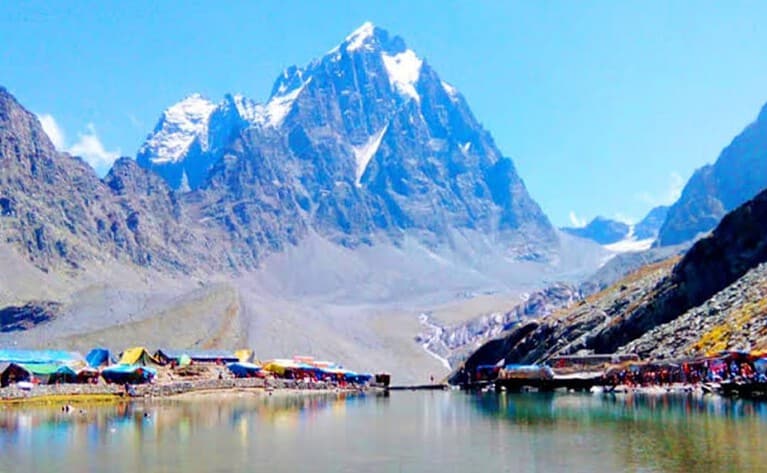
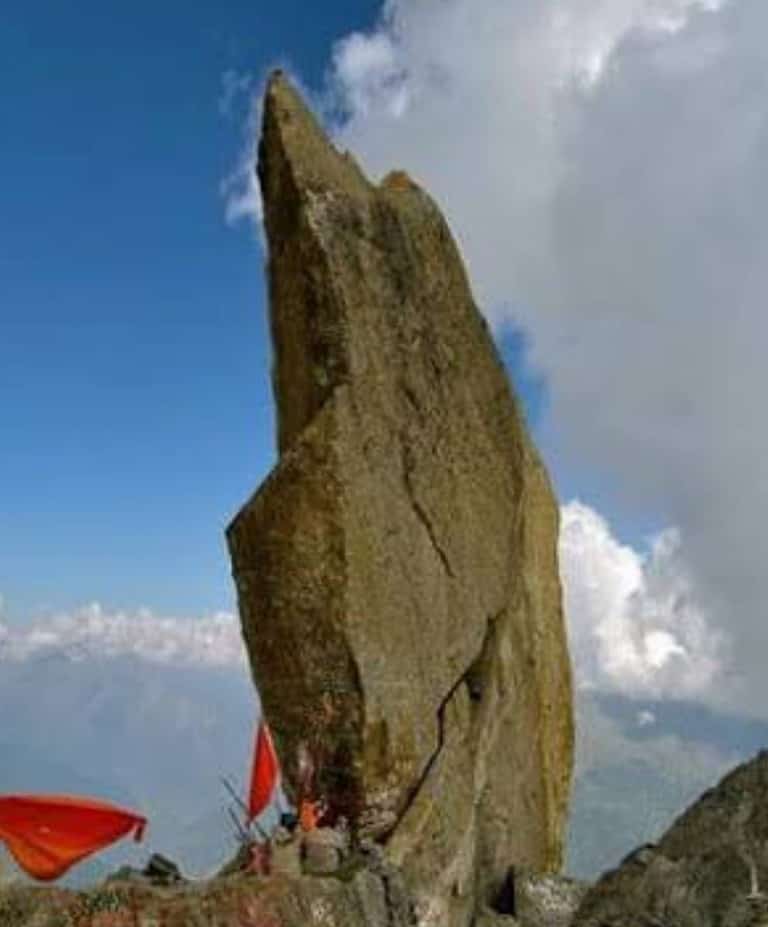
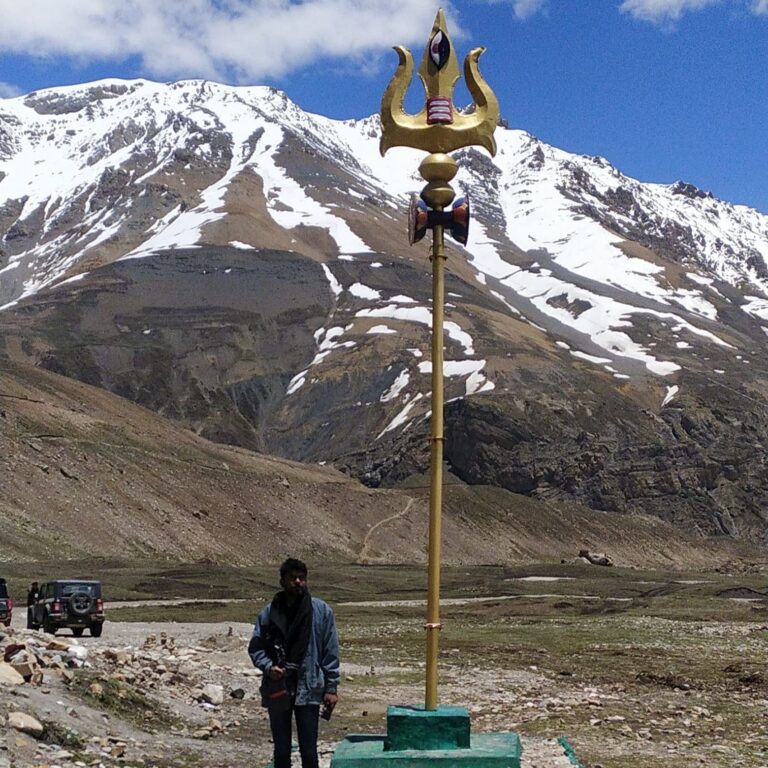
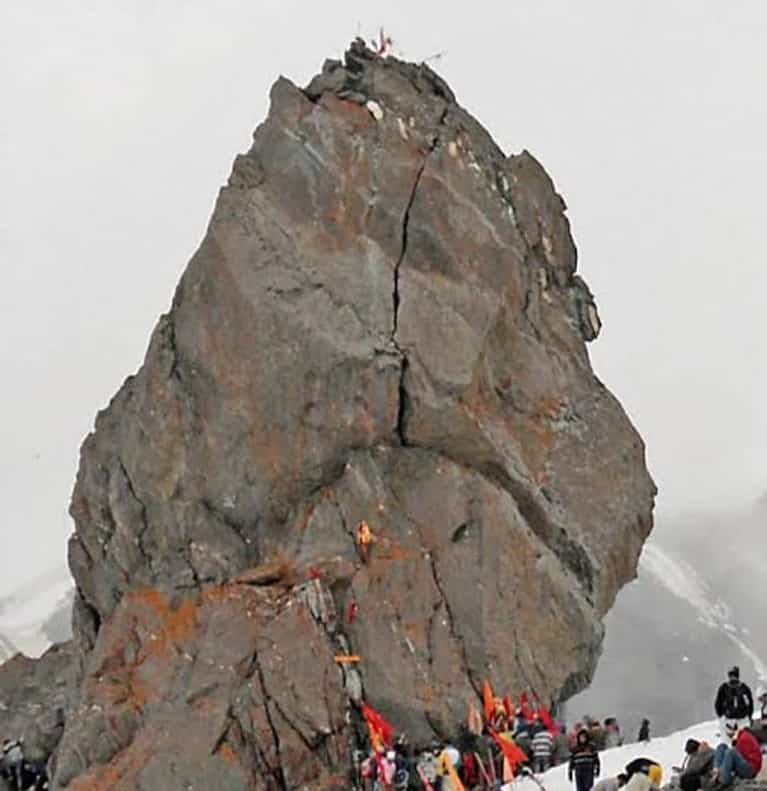
well written article and the blend of modern and mythology is so good and addictive, full marks.